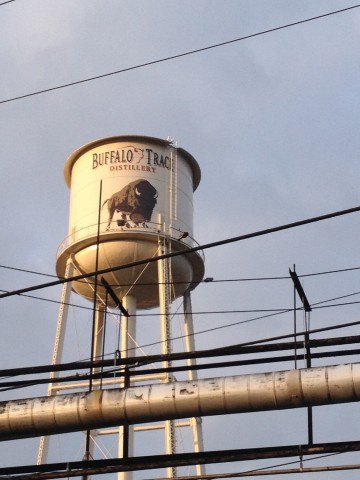A Visit to Buffalo Trace Distillery & Fun Bourbon Facts
Originally published on Martha Stewart's Everyday Food blog
I recently had the good fortune to attend a rehearsal dinner at Buffalo Trace distillery in Franklin, Kentucky. My dearest friend and her now-husband are rabid whiskey (and whisky) fans, so the location for their pre-wedding celebration was a natural. We toured the grounds as a part of the night’s festivities. Interesting and delicious!
Buffalo Trace claims the distinction of being the oldest continuously operated distillery in the U.S. (There’s been a working still on the grounds since 1787 and a distillery since 1857.) For those of you wondering about that little time in history called "Prohibition," Buffalo Trace operated even then. The distillery was given a permit to make whiskey for “medicinal purposes.” (Because who hasn’t used a spoonful with a little lemon and honey to soothe a sore throat?) One could obtain a “prescription” for no more than 1 pint for every 10 days. Buffalo Trace sold over 60 billion pints during that time.
Bourbon is made of corn, rye, and malted barley. In order for it to be actually considered bourbon, it must contain at least 51% corn. The grains are cooked separately -- first the corn -- then are added together to create the mash used for fermentation. One mash cooker can hold as much as 10,100 gallons!
After the grains are cooked and the mash is cooled, it ferments for 3 to 5 days, and is then double distilled. Before it’s aged in oak barrels, Buffalo Trace bourbon is actually clear -- they call it “white dog.”
Bourbon aging in white oak barrels, growing ever more delicious
Another stipulation for a liquor to be considered bourbon is that it must be aged in a new, never-used white oak barrel. Most of the white oak for the Buffalo Trace barrels comes from the Ozarks. It’s brought to the distillery cut into staves, which they then age for up to 6 months before building their barrels. The barrels are then charred on the insides, which helps to flavor the end product.
The bourbon is aged for 8 years minimum, over which time the oak barrels expand and contract with the temperature –- another way the liquor gains its flavor and color. Each oak aging barrel holds 53 gallons of bourbon, some of which evaporates over the time it’s aged. For those bourbons that are aged for 24 years, only about 6 or 7 gallons remain of that original 53. So that explains the cost!
Hankering for a bit of bourbon now? Why not try our Sour Cherry Smash? After all, it's Cocktail O'Clock!


